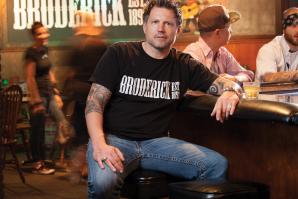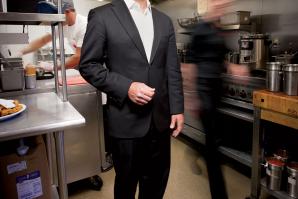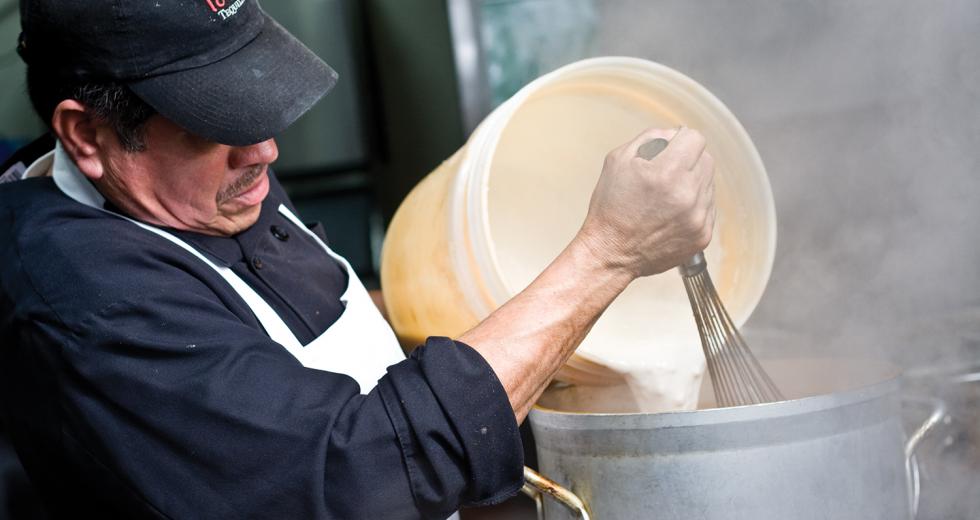Mikuni Japanese Restaurant and Sushi Bar felt the recession in April 2008 when catering sales began to slide. When the financial pinch hit the chain’s eight restaurants in the second and third quarters of 2009, its management team refocused marketing efforts.
Mikuni, which has six locations in the Sacramento region, one in Truckee and one in Denver, set its focus on the 30,000 members of its Mikuni Koki Club by expanding the program to benefit its most devoted 5 percent of customers — about 500 families — who are regular, longtime patrons and “contribute to our bottom line,” says Jeanne Mabry, vice president of marketing.
The company surveys its customers about their interests and, using that information, partnered with about 40 locally owned businesses, including landscapers, spas and cosmetic dentists. Then it added tiers to its rewards program, allowing its most loyal customers to use those services by redeeming points for dollars spent. Mikuni also gave top-tiered members jump-to-the-front-of-the-line privileges during peak times and the ability to make reservations, which the chain doesn’t typically accept.
Overall, the company has weathered the recession well. Sales dropped less than average compared to other restaurants in the region, says chief executive and chief financial officer Derrick Fong, who declined to be more specific. “If you’re going to spend a dollar in our restaurant, we better make sure we do the best job we can to deliver the experience that you want to have, that you expect to have, you demand to have,” he says.
Since the economic downturn started about three years ago, consumers have been eating out less and generally spending less when they do, causing restaurateurs to use an arsenal of tools to boost the bottom line. While there are signs of economic growth, “We’re not quite out of the woods yet,” says Annika Stensson, director of media relations for the National Restaurant Association, in an email.
The restaurant industry is an important part of the nation’s economic health. According to Stensson, its 12.7 million employees are about 9 percent of the U.S. work force. “The restaurant industry is a driver of overall economic recovery,” Stensson says. “For example, … every additional $1 million in restaurant sales generates 34 jobs for the economy.”
Restaurants are also a strong force in California’s economy, employing more than 1.4 million workers, according to the association. “Every $1 spent in California’s restaurants generates an additional $1.34 in sales for the state economy,” according to the association’s website.
Twitter, Facebook and other social media have become go-to tools to cultivate regulars and attract new customers. Promoting specials, offering new dishes at affordable prices, selling gift cards through discount retailers and extending happy hours are among other strategies.
Others are using partnerships to build a loyal following. Ten 22, an American restaurant in Old Sacramento that Harvego Enterprises LLC opened in November, donated 15 percent of one week’s revenues to the Crocker Art Museum. Chris Nestor, owner of Ink Eats and Drinks and the new House Kitchen and Bar in Sacramento, throws private wild game feeds, inviting several dozen hunters and anglers to his restaurants during a dead time. They bring pheasant, wild boar, abalone and duck, which the chefs cook for free. The restaurant makes money when people buy drinks.
Some restaurants are saving money through their membership with Leverage Buying Group, a three-year-old Sacramento-based cooperative of independent food providers. While the idea came about before the recession, it has helped some of its members from going under, says Joe Brodie, Leverage executive vice president.
Membership is open to independent food service entities, including restaurants, schools, caterers and nonprofits that must buy a minimum $2,000 in goods for each delivery from distributor U.S. Foodservice. A $1,000 initiation fee and a $195 monthly fee are required.
Leverage uses its members’ $7 million in buying power to negotiate set prices directly from manufacturers, giving it a similar level of buying power as national chains and protecting its members from food prices that fluctuate from week to week. More than 1,000 items have contract pricing, including meat, produce, paper goods, natural gas and credit card processing fees.
Leverage co-founder Mark Scribner, a partner in Paesanos, Uncle Vito’s Slice of N.Y. and Pronto, says he’s saved 4 percent on food costs with Leverage, money that can pay for repairs and management bonuses. “It made a difference between months of making a profit and not making a profit,” Scribner says of some of his locations.
In addition to the recession, furlough Fridays for state workers have pummeled some Sacramento restaurants, including Zocalo, says partner Jim Johnson, who is also a Leverage co-founder. Friday is typically the restaurant’s busiest day for lunch, but when state workers stay home, lunch sales drop 50 percent. In response, Johnson and his partner, Ernesto Jimenez, had to lay off employees for the first time.
To drive sales, they’ve been discounting heavily, including expanding Friday happy hour to five days and offering a midweek prix fixe menu for $20. They also hired a firm to focus on social media and trained staff to use it.
Few local restaurateurs have made wholesale changes to cut costs as dramatically as Mason Wong. Wong and his family, who own several establishments in Sacramento, closed the upscale Mason’s Restaurant on Feb. 15, transforming it into Cafeteria 15L, a casual eatery with a comfort-food menu and remodeled interior. The change was done in part to lower food costs, Wong says.
“I think comfort food has been becoming more popular within the last couple years,” Wong says. “There are quite a number of restaurants that have gone that direction. … [And] part of the reason is that the economy is definitely a little bit tougher now for fine dining.”
Randy Paragary says he’s focusing on great food and service to keep customers returning to his 12 Paragary Restaurant Group locations and Mas Cocina Mexicana in Roseville, which he owns with Johnson and Jimenez.
But the recession is prompting him to be even more creative. Last year, he launched iEat. Its 20,000 members receive email notifications of $20 three-course menus. To take advantage, they have to make a phone reservation and give a secret code. He also sells $100 gift cards for $80 at Costco during the holidays. While the restaurants sell the cards to Costco for less than what the consumer pays, the cards bring in customers in January and February, slow months for some of his locations.
With the recession and furlough Fridays, sales have dropped between 10 percent to one-third at Paragary’s restaurants. He’s cut back where possible, including labor and negotiating better prices with his vendors.
“Everyone is looking at every line item in their business to try and save nickels and dimes,” he says.
Recommended For You

Roll Out!
Food truck owners are driving new opportunities
Food truck success is leading to brick-and-mortar spin-offs for mobile restaurateurs ready to expand in Sacramento and beyond. For some, a fixed kitchen was always the goal, but for others, the choice to settle down was unexpected, the result of cultivating faithful patrons spreading the good-food word to more and more hungry friends.

The Colonel Behind the Cuisine
Acuity with Jot Condie
Jot Condie, 46, the California Restaurant Association in 1998 as its chief lobbyist. In 2004 he was promoted to president and CEO.



